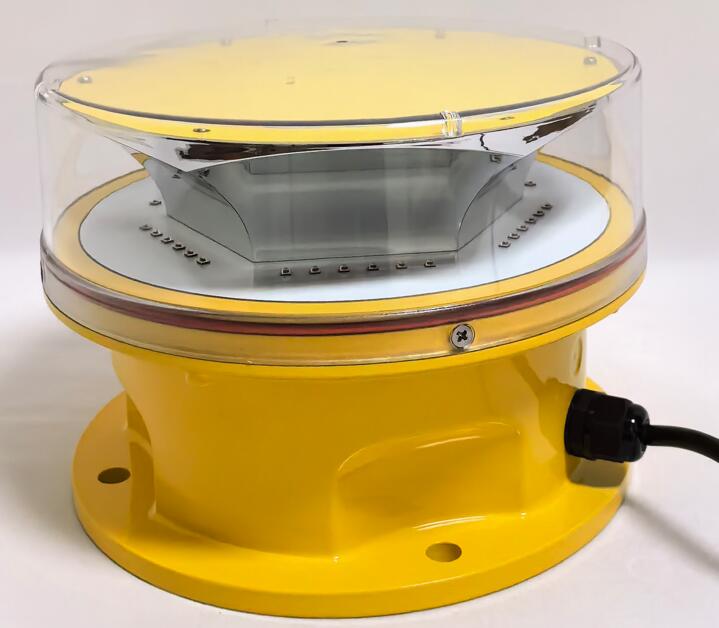Guardians of the Sky: The Critical Role of Obstruction Warning Lights in Aviation Safety
In the vast expanse of modern aviation, where the skies are increasingly crowded with aircraft, the importance of safety measures cannot be overstated. Among these, obstruction warning lights serve as a crucial line of defense, ensuring that tall structures do not become hazards to air navigation. These specialized lights, though often unnoticed by the general public, play a vital role in preventing collisions and safeguarding both human lives and valuable infrastructure.
The Purpose of Obstruction Warning Lights
Obstruction warning lights are high-intensity lighting systems designed to mark tall structures such as skyscrapers, communication towers, wind turbines, and bridges. Their primary function is to alert pilots to the presence of these obstacles, particularly during periods of low visibility such as fog, rain, or nighttime. By emitting bright, often flashing lights, these systems ensure that structures are visible from a distance, thereby reducing the risk of accidents.
Types and Applications
Obstruction warning lights come in various types, each tailored to specific applications and regulatory requirements. The most common types include:
Low-Intensity Obstruction Warning Lights: These are typically used for structures that are less than 45 meters in height. They emit a steady red light and are often employed on buildings in urban areas where the risk of collision is relatively low.
| obstruction warning lighting |
Medium-Intensity Obstruction Warning Lights: Suitable for structures between 45 and 150 meters, these lights emit a flashing white light during the day and a steady red light at night. They are commonly used on communication towers and wind farms.

High-Intensity Obstruction Warning Lights: Reserved for structures exceeding 150 meters, these lights emit a powerful white flash that can be seen from great distances. They are essential for tall skyscrapers and large communication towers.
| obstruction warning lighting |
Technological Advancements
The field of obstruction warning lighting has seen significant technological advancements in recent years. Modern systems are equipped with LED technology, which offers several advantages over traditional incandescent bulbs. LEDs are more energy-efficient, have a longer lifespan, and provide brighter and more consistent illumination. Additionally, smart obstruction warning lights with integrated sensors and wireless connectivity are becoming increasingly popular. These systems can automatically adjust their brightness based on ambient light conditions and can be remotely monitored and controlled, enhancing their reliability and efficiency.
Regulatory Compliance
The installation and operation of obstruction warning lights are governed by stringent regulations set forth by aviation authorities such as the Federal Aviation Administration (FAA) in the United States and the International Civil Aviation Organization (ICAO) globally. These regulations specify the type, intensity, and placement of obstruction warning lights based on the height and location of the structure. Compliance with these standards is mandatory to ensure the safety of air traffic and to avoid legal repercussions.
Environmental Considerations
While obstruction warning lights are essential for safety, their impact on the environment cannot be ignored. The bright lights emitted by these systems can contribute to light pollution, which affects both human health and wildlife. To mitigate this, manufacturers are developing eco-friendly obstruction warning lights with reduced light spillage and lower energy consumption. Additionally, some regions have implemented "dark sky" policies that require the use of shielded lights to minimize light pollution.
Future Prospects
As urbanization continues to rise and structures become taller and more complex, the demand for advanced obstruction warning lighting solutions is expected to grow. Future developments may include the integration of solar-powered obstruction warning lights, which would further enhance their sustainability. Moreover, the use of artificial intelligence (AI) and machine learning could enable predictive maintenance of these systems, ensuring their optimal performance and reducing downtime.
Obstruction warning lights, though often inconspicuous, are indispensable in the realm of modern aviation. They serve as silent guardians, ensuring the safety of countless lives by marking potential hazards in our increasingly crowded skies. As technology continues to advance, these systems will undoubtedly evolve, becoming more efficient, environmentally friendly, and intelligent. In a world where safety is paramount, obstruction warning lights will remain a beacon of security, illuminating the path to a safer future.
In summary, the role of obstruction warning lights in modern aviation is both vital and multifaceted. From their basic function of marking tall structures to their integration with cutting-edge technology, these systems are a testament to human ingenuity and the relentless pursuit of safety. As we continue to build higher and push the boundaries of engineering, obstruction warning lights will remain an essential component, ensuring that our skies remain safe for all who traverse them.
